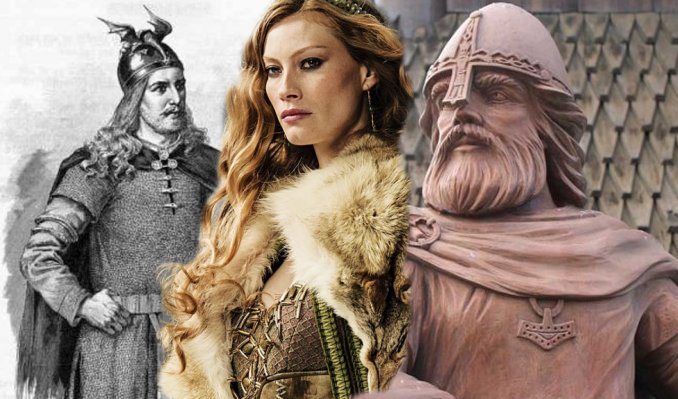Ellen Lloyd - AncientPages.com - Famous Viking Ragnar Lodbrok is today remembered as a legendary and fearless Sea-King whose history is very unusual.
Ragnar Lodrok considered himself to be a direct descendant of the God Odin, and he was one of the most popular Norse heroes among the Vikings. His sons became just as famous and heroic as he had been.
On one occasion, Lodbrok learned from a seer that he would have many famous sons. He became somewhat obsessed with this prophecy, which almost led to a tragic event when he tried to kill his son, Ivar the Boneless.
Lodrok's relationship with his sons was full of contractions. He wanted his children to be brave, strong, and fearsome warriors, but at the same time, he was also afraid his sons could become more popular than he was.
One of his sons was Ivar the Boneless, who was a Berserker warrior.
Aslaug Was A Völva and Daughter Of Legendary Valkyrie Brynhildr
Ragnar's second wife was Aslaug, the daughter of legendary Valkyrie Brynhildr, who God Odin once punished. Aslaug's father was legendary Norse hero Sigurd, who used a magical sword named Gram which meant "enemy," to slay an evil dragon.
The Gram sword is depicted on an old runestone standing on a hill just outside the Swedish city of Eskilstuna.
The relationship between Lodbrok and Aslaug is described in the 12th-century Icelandic poem Krákumál.
Aslaug was said to be so beautiful that bakers would let their bread burn while staring at her. She was also a Völva.
A Völva was a mighty female shaman and seer in Norse mythology.
She held an essential place in the ancient Viking society, and her powers were considered so strong that not only Vikings feared her prophecies, but even Odin, the greatest of all Norse gods, consulted her to learn what the future had in store for the gods.
Aslaug's first son was Ubbe, who was conceived whilе Rаgnаr wаѕ still mаrriеd to Lаgеrthа. His birth led to a split between Lodbrok and his first wife, Lаgеrthа.
Hvitserk was their second son, and Sigurd "Snake-in-the-eye" was their third son.
Ragnar Lodbrok Wants To Kill His Son Ivar The Boneless
Then, Aslaug gave birth to Ragnar Lodbrok's fourth son, whom we know as Ivar the Boneless.
Aslaug is the clever and beautiful daughter of the famed dragon slayer Sigurd and shield-maiden Brynhildr. Aslaug promised Ragnar that she would provide him with the sons which the ancient seer prophesized for him. Credit: IMDb
Ivar the Boneless was not like any ordinary child. Norse Sagas tell he was born with twisted, dеfоrmеd lеgѕ, and Lodbrok refused to accept the child. He told his wife Aslaug that the newborn boy could not live long with such a horrible deformity.
He said that he must kill his son against Aѕlаug'ѕ wiѕhеѕ. Aѕlаug argued for her son's life, but Lodbrok stole the child and took him to a forest where he wanted to end his life. But he couldn't. In the end, he couldn't kill his son.
The child was named Ivar, and his deformed legs and odd body were the subjects of gossip in the village.
Lodbrok did his best to avoid Ivar, and their relationship was also tense, but Norse Sagas reveal that Ragnar did love his deformed son though he was convinced he had no future in the Viking world.
Lodbrok underestimated Ivar the Boneless's strong will and capabilities as a warrior.
Ælla of Northumbria's execution of Ragnar Lodbrok by Hugo Hamilton (1802–1871). Lodbrok died in a snake pit. His sons, including Ivar the Boneless, took revenge. Credit: Public Domain
Ivar the Boneless became an exceptionally violent and cruel Viking warlord, reputed to be a berserker. He was reported to serve as a warrior in Denmark, where he was said to lead an army of Berserker warriors.
In the Sagas, Ivar the Boneless is described as more like a giant than an ordinary man. He also took revenge for his father's death and killed Aella, subjecting him to the dreaded 'blood-eagle' as a sacrifice to God Odin.
Updated on November 19, 2022
Written by Ellen Lloyd – AncientPages.com
Copyright © AncientPages.com All rights reserved. This material may not be published, broadcast, rewritten or redistributed in whole or part without the express written permission of AncientPages.com
Expand for references






